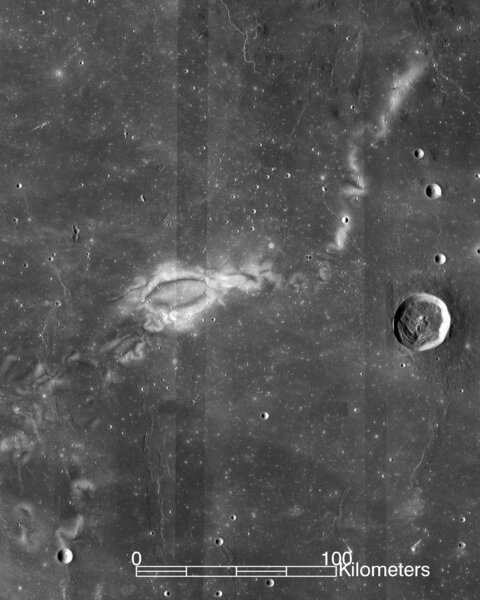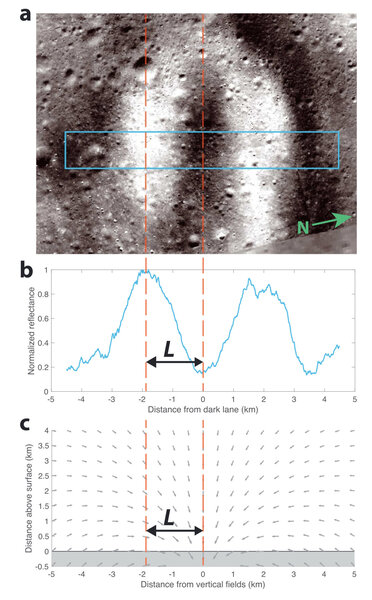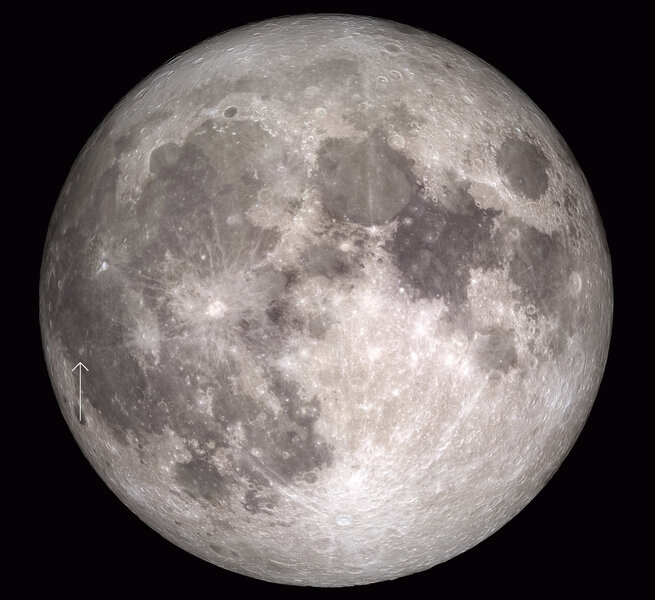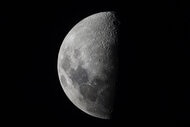Create a free profile to get unlimited access to exclusive videos, sweepstakes, and more!
Gorgeous lunar swirls record the Moon’s ancient magnetism
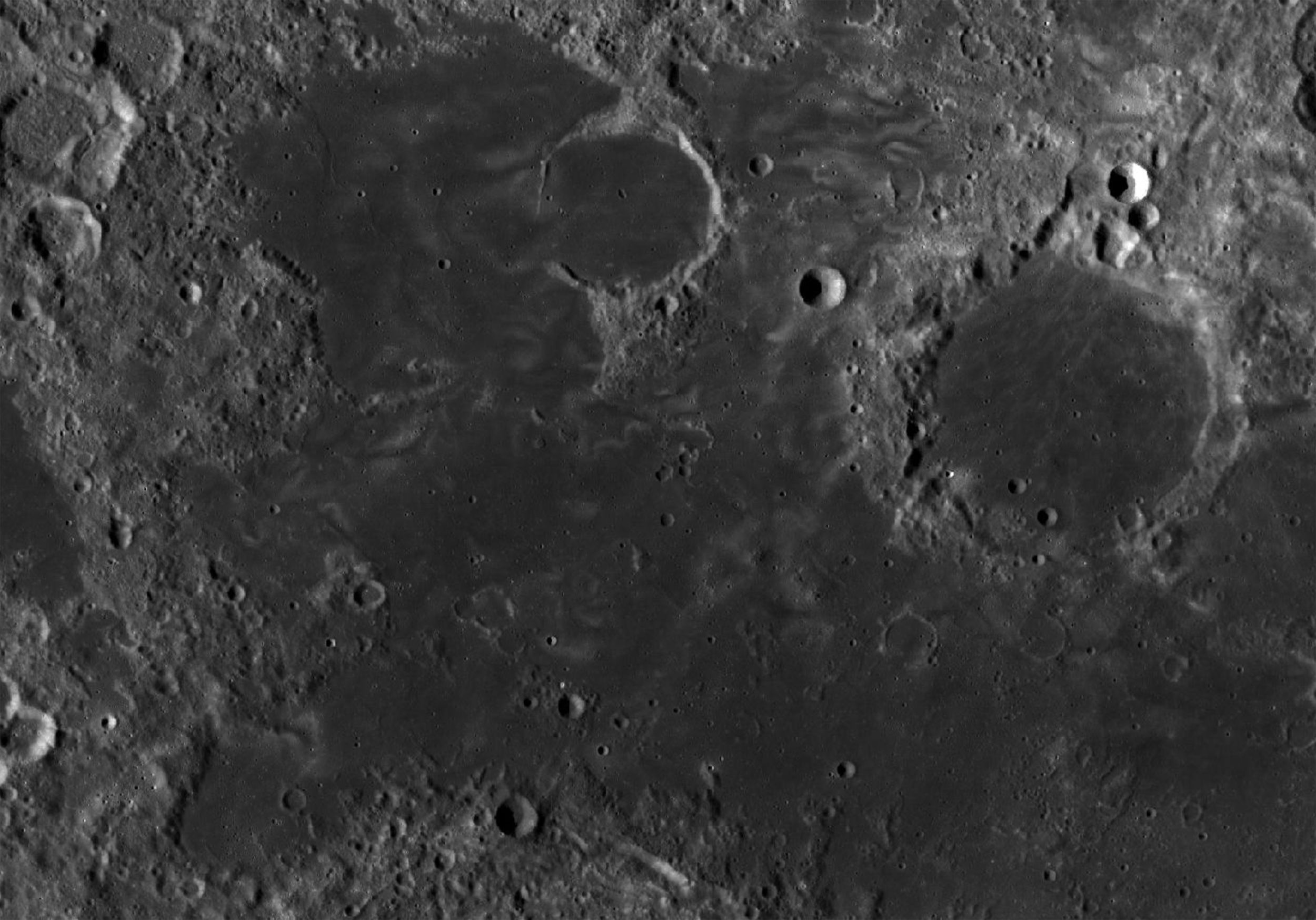
The Moon is the closest celestial body to the Earth in the entire Universe. We’ve been studying it for centuries, millennia, so you’d think by now we’d understand it pretty well.
But that’s not the case. It turns out it’s not just some big rock hanging out there in space! It’s complicated, with a varied terrain, a mix of constituents, and a rich history that’s changed it a lot since it first formed.
Still, amazingly, there are features, big features, that we’re just now figuring out. Get this: There’s this one kind of surface structure that is so big they’re visible in a small telescope, and I was astonished that a) I only first heard about them recently and 2) scientists are only now starting to understand what forms them.
They’re called lunar swirls, and they’re simply lovely.
That is a lunar swirl, called Reiner Gamma*. Isn’t it beautiful?
It’s also terribly strange. For one thing, it’s not an elevation feature! In other words it’s not bright or dark due to illumination angle, as a crater rim or a mound might be where it’s lit by the Sun on one side and shadowed on the other. So a swirl isn’t topographic; it’s as if it’s been painted on the pre-existing surface. It’s what we call an albedo feature, a change in brightness due to reflectivity.
Unlike other surface features, it’s not sharp and well-defined. It has a softer appearance, again like spray paint. It’s also long and sinuous. In that way it’s like a rille, a winding channel in the surface cut by flowing lava billions of years ago (in fact you can see a very narrow rille at the top of the image; some are much wider). But this is obviously not a channel. The folks at the Lunar Reconnaissance Orbiter site have a wonderful zoomable image that will help you get a feel for this weird feature.
It’s big, too. The major blob in Reiner Gamma is over 25 kilometers across, and the rest goes on for well over 100 km. Several other swirls are known, including a couple on the far side. They tend to be found in maria, huge ancient impact sites that filled with lava — these are the darker blotches on the Moon you can see by eye. This makes the surface there rather smooth and tends to be dark. In fact “maria” is Latin for “seas,” because they look blue when viewed in the day.
So what are they?
A big clue came in the very early 1970s. Apollo 15 and 16 mapped the magnetic field of the Moon, and found these swirls were in areas where the magnetism was more intense. Isn’t that interesting! But what does it mean?
The Moon doesn’t have an overall magnetic field as the Earth does. It certainly did long ago, probably 1 – 2.5 billion years ago. But the molten core of the Moon finally solidified, and you need one of those to generate the magnetic field (in what’s called a dynamo).
What’s left today are local spots of magnetism, in most cases an imprint of the original field left behind in the rocks. When the surface solidified, iron atoms in the minerals aligned themselves with the field, and even when the field died that alignment remained. Even so, in some places the local field is stronger than you’d expect from the ancient dynamo.
So what does magnetism have to do with swirls? You may already know that Earth’s magnetic field acts as a shield against the solar wind, a stream of subatomic particles blowing from the Sun. Charged particles can be deflected by a magnetic field, or can follow the field lines and be funneled to different locations (like the geomagnetic poles), depending on how they interact with the field.
The same is true for the Moon. In this case the Moon’s global field doesn’t exist, so in general the solar wind is free to slam into the surface. This changes the chemistry of the minerals there, darkening them over time. In fact this is a way to get the age of some features; brighter features tend to be younger, since they haven’t been exposed to the wind for as long.
For swirls, the idea is that the magnetic field embedded in the rocks, weak as it might be, could still be strong enough to affect the incoming wind. If the field is aligned the right way, then the wind is deflected from one spot to another. The protected area stays bright while the impacted spot darkens.
So cool, that explains the changing albedo. But what’s the deal with the swirls being long and sinuous?
A new study may have the answer to that. Planetary scientists looked at what the magnetic field of small areas of the Moon would look like given various features underground, matching them to the changing shades of the swirls. They found that they can reproduce a looping magnetic field (similar to that around a bar magnet) where it comes out of the surface at the dark spots and reached its peak above the surface over the bright spots. When they did, they saw that the whatever is causing this can’t be more than about 3 km underground (so very shallow) and has to be pretty long (as you’d expect).
So what can do this?
Remember rilles? Lava flowing along the surface carves those long channels, and sometimes the top of the lava cools enough to form a “roof” above it. When that happens the lava can be so well insulated it can stay hot as it flows for hundreds of kilometers. Not only that, but the lava can have more iron in it than surface rocks, so it can form a stronger magnetic field. We do see such features near swirls, too: As I noted earlier there’s one not far from Reiner Gamma in that image above, for example. Mare Ingenii is a smallish impact feature on the Moon’s far side with swirls, and there’s a collapse pit there, where the roof of a lava tube has collapsed.
The researchers also found that dikes could be the culprit, too. These are magma intrusions, where molten rock can be squeezed in between layers of other rocks. On Earth — for example, in Colorado’s Black Canyon, which I’ve seen and honestly, holy wow you should go if you ever get the chance — the rocks around the dike can erode away, leaving huge vertical walls of tougher material standing out from canyon walls. Something like that under the surface of the Moon could also generate the right kind of magnetic fields to explain the swirls.
Amazing! Such an odd and beautiful feature, and such a cool mechanism to make one. In some ways, they remind me of iron filings on a piece of paper with a magnet under them… but with a piece of paper a hundred klicks long, a bar magnet so weak you could barely detect it, and a flood of radiation for a billion years or so to make the whole thing visible.
And speaking of which… Reiner Gamma is located in Oceanus Procellarum, the huge dark region on the western part of the Moon’s near side. It becomes sunlit shortly before full Moon, and is big enough that it should be relatively easy to spot in my telescope. It’ll be visible in the current lunar phase cycle starting September 22.
I’ve already marked my calendar. It’s not often I write about something I can go out and see! It’ll be fun to try to make that happen.
*Surface features on the Moon are named weirdly sometimes. A big crater a couple of dozen kilometers across might get a proper name, and then smaller craters around it have the same name followed by a letter. Other features that aren’t craters can get Greek letter designations. Reiner Crater, to the right of Reiner Gamma in the image, is about 30 km across, with a dozen or so craters around it called Reiner A and so on.
